St. Innocent I (401-417) 41st Pope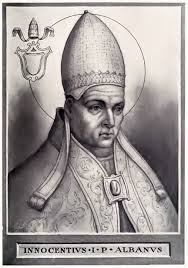
Two weak emperors ruled the empire
He consolidated papal supervision of the Church
He issued decrees promoting celibacy and combating adultery
Alaric, king of the Visigoths entered Italy and the emperor fled to Ravenna
Alaric sacked Rome, but spared the Churches and monastery, out of deference to Innocent I
The remaining pagans claimed that Rome fell because it had abandoned worship of the old gods.
St. Augustine refuted this claim in his work City of God
Innocent ordered that the repentant dying people cannot be refused final absolution
He decreed that only bishops should give the sacrament of confirmation
Some Christians believed in the heresy that denied both original sin and divine grace. This heresy held that one’s own personal will, good intentions and works, regardless of belief or sacraments, will win one’s salvation (Pelagiansism)
He established the Roman rite
He persuaded the emperor to gladiator contests in the arenas
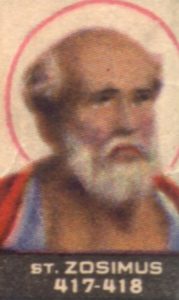
St. Zosimus (417-418) 42nd Pope
He reconfirmed the condemnation of Pelagiansim
He insisted on the rights of the Church against foreign interference’
St. Boniface I (418-422) 43rd Pope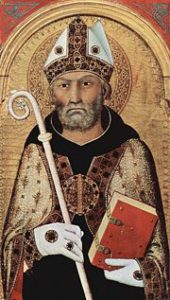
He continued the fight against Pelagianism
He enforced the law forbidding slaves to become priests
This time marks the beginning of secular interference in the election of popes
St. Celestine I (422-432) 44th Pope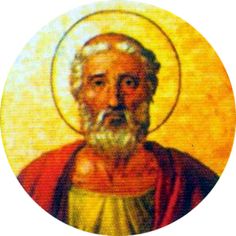
Some Christians believed in the heresy that there were two persons in Christ, one human, one divine.
Because of this, the Virgin Mary could not be called the Mother of God, but only Mother of Christ (Nestorianism)
A Roman synod and the council of Ephesus condemned Nestorianism.
Ephesus was the location where Mary was placed in the care of John until her death
The condemnation of the council carried the force of the law, because Church laws were civil as well
Nestorianism spread into the Persian frontier. Nestorians took control of churches in Persia.
Persian authorities persucted Christians tied to Rome
St. Celestine sent missionaries to Britian and Ireland to evangelize and combat Pelagianism
Mention is first made in this period of the pastoral staff
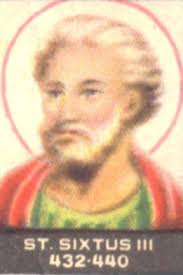
St. Sixtus III (432-440) 45th Pope
He was very lenient against the Nestorians and Pelagians
He rebuilt the basilica of St. Mary Major in commemoration of the council of Ephesus reaffirmation of Mary’s divine motherhood
He restored the baptistery of the basilica of St. John Lateran
St. Leo I (440-461) 46th Pope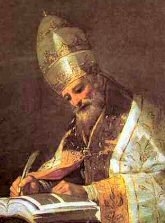
Against the background of crumbling imperial authority and barbarian invasions, He took a firm hand in Church affairs
Some Christians believed in the heresy that the human body is evil (Priscillianism)
Some Christians believed in the heresy that Christ had a single divine nature. (Monophystism)
He convened the council at Chalcedon which condemned Monophystism
Through misinterpretation of the council, many Christians in the East separated from the main body of the Church
Those Christians in the East did not separate were called Melkites (Royalists)
Attila the Hun came south into Italy. St. Leo convinced Attila to spare Rome
Gaiseric, king of the Vandals, came north into Italy. St. Leo convinced Gaiseric to spare Rome
St. Leo is called “Great” because of his energetic work in maintaining the unity of the Church
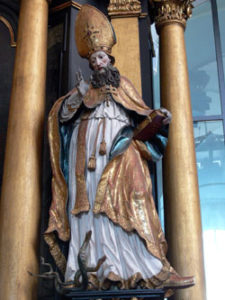
St. Hilarius (461-468) 47th Pope
He decreed that popes and bishops should not nominate their successors
He ordered that annual synods be held in southern Gaul
St. Simplicius ( 468-483) 48th Pope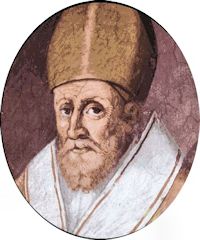
The Church was ever more threatened by external and internal enemies
The Western emperor was deposed by the Odoacer, head of his Germanic guards
Arian Vandals ruled north Africa
Arian Visogoths ruled Spain and southern Gaul
Pagan Franks ruled northern Gaul
Odoacer proclaimed himself king of Italy, saying that empire needed one ruler
He resisted the Constantinople archbishops desire for greater power
The two older eastern patriarchates were in a virtual state of civil war
The struggle against Monophysitism was severe. This heresy was favored by three successive emperors
The Coptic Orthodox and Syriac Orthodox Churches developed as a result of these struggles in the East
For the first time since Constantine, there was not a single Catholic king on earth
He regulated the distribution of offerings to pilgrims and for new churches
St. Felix III (483-492) 49th Pope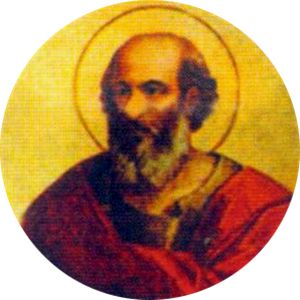
His grandson was to become Pope St. Gregory I
He had to deal with the ongoing struggle of Monophytism
He condemned the emperor, leading to another schism
He decreed strict regulations for the readmission into the Church of those who had accepted Arianism
St. Gelasius I (492-496) 50th Pope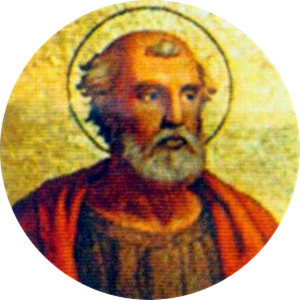
He also continued to struggle with schism
Pelagiansim and Manicheanism continued
He ordered that the laity to receive from the cup, contradicting the Manichean claim that wine is evil
He ended the pagan festival of Lupercalia. This festival featured goat sacrifices and physical striking
He was a great liturgist, instituting the code for ceremonies and rites
He inserted the Kyrie eleison, a responsorial psalm in the opening rite in the Mass. Kyrie eleison is Greek for “Lord have mercy.”
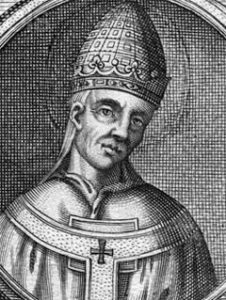
Anastasius II ( 496-498) 51st Pope
Clovis, king of France, was baptized. This was the first of the barbarian kings to Catholicism
Anastasius continued to fight against schism
He maintained that sacraments given by schismatic priest were valid.
He condemned the heresy Traducianism. This heresy teaches that human souls were handed down to children by their parents, rather than creations by God at the moment of conception
St. Symmachus (498-514) 52nd Pope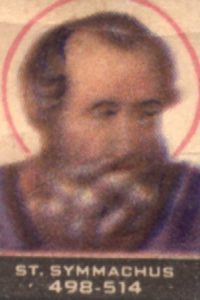
He was a convert from paganism
He issued regulations regarding papal elections
He ordered that the Gloria was to be sung at all Sunday Masses
He consolidated Church property
He ransomed all slaves, giving them their desired freedom
He started the first construction of the Vatican Palace
Laurentius was chosen as the 5th anti-pope. He was chosen by those who were lenient toward the schismatic

I’ve learn several just right stuff here. Certainly value bookmarking for revisiting. I wonder how a lot attempt you put to create one of these excellent informative site.|
Hi Chauncy,
I am glad you like this information. I used this same info in my teaching my high school RE classes. I just put this info in my website for everyone (kids and adults). I just wanted to make Church history interesting.
Hello there, You have done an excellent job. I’ll certainly digg it and personally suggest to my friends. I’m sure they will be benefited from this web site.|
Hi Carrol,
Thanks for your help kind words. I just wanted to make Catholic church history (and the Papacy) interesting. This is the same info I used when I taught my high school RE classes. Appreciate letting others know about this.
Mike
It’s remarkable to visit this website and reading the views of all friends regarding this piece of writing, while I am also keen of getting experience.|
Hi Lindsay,
I appreciate the kind words. As you may know, I am a catechist (RE teacher). I am trying to make Church history (and the Papacy) interesting. This is the same info I used when teaching high school RE classes. I just put this on my website to reach adults and also the younger demographic. Please let others know about it. Mike